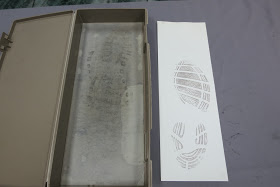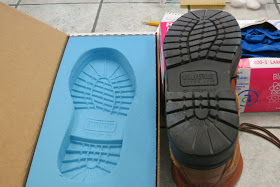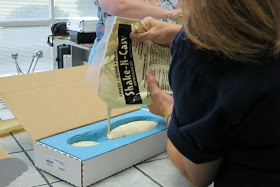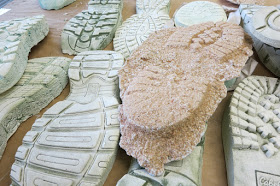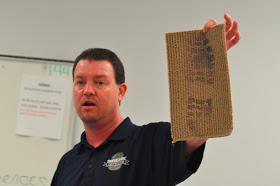TriQuarterly
Not-quite-naked
Dinah Lenney
Craft Essay
A writer friend of mine published a story, a family drama that featured a young couple and a difficult child. When her own daughter was old enough to read, she wanted to know, not if she was the baby in the book, but if her mother’s feelings for her back then were the ones she’d written about.
And another friend includes, in every novel she writes, a man with a habit—always the same gesture, a recurring trope—that irritates his wife. And yet. In life, her husband continues to do the irritating thing. All these books later, he doesn’t seem to notice or care. But I do.
*
I like to joke that I watch what I write about my husband and children. Because I want them to love me, I say. Actually, I’ve promised I won’t write about the kids anymore. Grown up as they are, their lives are not grist for my mill: I get it, I do. Still, my daughter teases now and then. “There’ll be no more of that,” she says. It’s not that she doesn’t trust me, not exactly—but she’s reminding me, lest I lose my place. And I reassure her: “This is why I write nonfiction.” Then I explain that it’s because I mean to choose what and how much I’m willing to tell. As a writer of fiction, I’d wind up baring it all, wouldn’t I? She makes a face. “What kind of fiction writer—,” she starts to say, then stops herself. In the first place, she knows (don’t we all): great writers of great fiction draw on their lives, their experience, their real-life relationships to tell their stories. In the second, even if they don’t, they’re suspect—that is, we readers are suspicious, how not?
*
Here’s Tim Parks in a recent issue of the New York Review of Books:
The narrator of Philip Roth’s Deception, himself called Philip Roth, tells his wife: “I write fiction and I’m told it’s autobiography, I write autobiography and I’m told it’s fiction, so since I’m so dim and they’re so smart, let them decide what it is or it isn’t.” For Roth there were few taboos left to break at this point and any partner of his could consider herselfwell-warned. With other writers much may be at stake.
And here’s Roth, himself, in the New York Times Book Review, having defended his fiction for the fiction it is. “As for the kind of writer I am?” he adds. “I am who I don’t pretend to be.” (Say what?)
And—a while back, also in the Times—in a piece titled “What Is Real Is Imagined,” Colm Toibin writes: “The world that fiction comes from is fragile.” About Mann and Beckett and Wolfe, he insists:
when it came to the moment when they were putting their stories together, working out the details, mixing memory and desire, they had no qualms, no problems aboutappropriating what they pleased. They used what they needed; they changed what they used. Their soft hearts became stony.
*
Why this preoccupation with fiction, Dinah? I’m supposed to be thinking about nonfiction; about point of view, “The Naked I” (a phrase coined by Margot Singer), as it informs voice in memoir and personal essay. No question it does. I’m convinced we come to the genre to keep company with the writer, that we are at least as interested in the who as the what—as in who’s telling the story, and why and how. However. Compulsive first-person narrator that I am, I feel a confession coming on.
Because I know why we read the stuff, but why do we write it? Do we mean to get naked? As if I could speak for everyone. That I can’t is among the most important reasons for each of us to get it right on the page. And this is why, when asked to confront “the Naked I” from every angle, I’m obliged to consider: Am I willing to strip down? All the way? To show everything? Or am I not only too encumbered, too fleshy, too flawed, but also too vain? Too devoted to “voice”?
*
Recently a poet friend, asked whether or not he prescribes or follows writing rules, answered with a quote from Roethke: “If you cannot mean then at least sing.” But as I understand what we do, it’s only if the prose is singing that a writer has a chance of saying what she means. “Sense follows sound,” wrote Leonard Michaels.
And Cynthia Ozick said, “Cadence. Cadence is the footprint, isn’t it?” That she said so in one of those Paris Review interviews titled “The Art of Fiction” shouldn’t trouble me—no surprise that writers of all genres are preoccupied with voice. But who actually has to get naked to find it? How naked exactly does she have to be?
*
Here’s Francine Prose, from an anthology called Who’s Writing This: Notes on the Authorial I with Self Portraits (edited by Daniel Halpern):
I often think that she would like me to disappear.
The evidence in support of this nearly incredible theory is that she never seems happier than when she is writing, when the work takes over . . . and seems to write itself . . . What pleases her is that she isn’t there, she no longer feels herself present, and I . . .
Someone else is writing, and both she and I have vanished.
For years I was an actor—almost straight out of college I went to acting school—if you’d asked me back then why, why go to school, I might have told you that I wanted to learn, among other things, to vanish—
But to vanish inside a part? If that’s what you want to do, you have to get naked first. Moreover, it’s not enough to get naked (this is what I used to tell my own students), you have stand up naked and turn around slowly. Which is terrifying and exhilarating—and, in some ways, a lot like writing when it’s going well.
The thing is—although either way the requirement is nakedness—most wannabe actors only think they want to vanish. Some are shy, perhaps, and acting sets them free. Many, though, have been made to feel self-conscious about their intensity—as if they were too passionate, too pungent. I was one those kids, my longings outsized, my feelings turned up too high for ordinary rooms. On a stage, however, framed by the proscenium, speaking and singing (living!) resonated with appropriate significance.
*
Jem Cohen’s gorgeous film Museum Hours, which came and went in a flash last year, is the story of a friendship struck up between a tourist and a guard in the Kunsthistorisches Museum in Vienna. It’s also very much about the relationship between life and art: How do we discern one from the other? What defines the latter? What’s it for? How is it supposed to make us feel? In the film—in the museum—lots and lots of nudes on the walls, enormous nudes. And long, slow scenes (it’s a long, slow, movie) of ordinary people staring them down. Then, suddenly, the ordinary people are naked themselves, framed by the filmmaker and the screen—and we in the audience are compelled to gaze on them as they gaze on the paintings.
The scene is funny and uncomfortable, at first. In the dark of the theater, it takes its time, allows us—compels us, that is—to reflect: When are we attracted or repelled by nakedness? When is it beautiful and when is it artful, and when are they one and the same? And who decides—the creator? If so, how does he choose how much to reveal? For isn’t the act of choosing requisite to art? Beauty can be accidental, right? But if art isn’t contrived—conjured and made—then what’s to distinguish it from life? And if we’re determined to make the distinction—equally determined not to label the work a “fiction”—how, without undermining its value, to convince a reader that it’s true? The answer must have something to do with sound, cadence, voice. Music, after all, isn’t real or imagined: it’s music. That’s what it is.
*
Here comes that confession (she starts to disrobe): first, as with acting, I don’t write to disappear, but rather to locate myself. But wait—which self am I talking about? What a stunner to discover—to have to admit—I am not only or even essentially the mother, the wife, the teacher, the student, the neighbor, the friend, the actor, the writer—even as I have tended to write firsthand accounts out of those relationships and situations. But wait again: Don’t fiction writers use first-person narration? Don’t they break the fourth wall? But they’re writing in character, yes? As if I’m not? Of course I am. Does it make a difference—does it say anything about my state of undress that I’m telling you so? I’m certain it does.
With a nod to Vivian Gornick—who so well defined the difference between the situation and the story—let me insist that whoever I am, whichever self I bring to the page, for the purposes of this essay, the story is that I locate that best and most honest self—my frankly honed persona, I mean—through my voice.
And (she stands before you not-quite-naked) the other story, for now anyway, is that I’m not able to find that cadence—that willingness to sing out—as a writer of fiction.
Why not? Well, having to do with my friend’s intelligent daughter, and my other friend’s impervious husband, and with another writer, hugely successful, with whom I am only slightly acquainted.
Let’s say she’s a redhead.
Let’s say she has a husband and six kids and lives in a house on a hill.
Let’s say she writes fiction in first, second, and third, and many of her stories feature a woman with red hair and a husband and six children, and they all live in a house on a hill.
Let’s say these stories are full of lust and infidelity. In the stories, which are gorgeous and painful and embarrassing (they feel so true), the woman betrays her family again and again. Meanwhile the author—the real-life redhead—continues to live with the husband and their brood in that hilltop house.
Or what if she’s not a redhead? What if she’s a blond with a lover and two kids in a condo: but let’s say, though I hardly know her, I recognize a moment, an expression I’ve seen in her eyes, as described in the eyes of the redhead in the story. If I see it, surely her husband, her mother, her father, her friends, her children see it too, yes?
I have yet another writer friend—a colleague who claims that she always assumes that everyone makes up everything. But I don’t. That’s not what I assume. I want to think, after Colm Toibin, that a fiction writer uses what she needs and changes what she uses. How else to make me believe that her fictions are true?
So what I’m conceding? (she begins to turn—) I’m not willing to make you guess—Is she naked? Is that she? To boot, I only feel authentically present—that is, willing to fail, and fail again, and fail better—in one genre: nonfiction. And to clarify: it’s my intention not so much to expose myself (though I have, though I do, though I will) as to bust myself in that act and, in that way, to get closer and closer not only to what I think and what I know, but to the possibility of bumping up against the truth of what I didn’t believe I would ever understand. Me, too, Mr. Roth—I am who I don’t pretend to be.
Which is not to confess to a failure of imagination, oh no. Although possibly to a failure of nerve. To my desire to control, as best I can, your impression of me. Except I do so nakedly—I’m not convinced I could fool you otherwise. I don’t want to fool you, that isn’t my aim, not at all. I only want to sing for you, in the key of my choosing and as well as I know how.
40.037875
-76.305514




